| 
Reg. Trib. Milano n. 418 del 02.07.2007
- Direttore responsabile: Elisabetta Brunella
International Edition No. 158 - year 14 - 16 September 2019

more than 15,000 subscribers |
|
Dear readers,
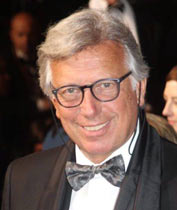 we all talk about added content (or alternative content or event cinema or specials as you wish), but above all we offer it to our spectators. The shift from 35mm to digital projection, together with the installation of devices for receiving live shows, has resulted in a growing number of theatres becoming authentic cultural hubs. Our audiences know that, as well as films, the big screen hosts operas, ballet, concerts, theatre, art... we all talk about added content (or alternative content or event cinema or specials as you wish), but above all we offer it to our spectators. The shift from 35mm to digital projection, together with the installation of devices for receiving live shows, has resulted in a growing number of theatres becoming authentic cultural hubs. Our audiences know that, as well as films, the big screen hosts operas, ballet, concerts, theatre, art...
But if this diversification in offer has now become an everyday experience, on the other hand little is yet known about the market for added content and its potential. This is why MEDIA Salles does not cease to develop tools for researching this particular sector of the audiovisual industry building a bridge with live shows. Indeed, this edition of the DGT Online Informer hosts a new column giving voice to the experts in this field: I wish you pleasant and informative reading!
Paolo Protti,
President
(Per leggere il testo in italiano cliccare qui) |
The 2019 Added Content = Added Value Conference and Talks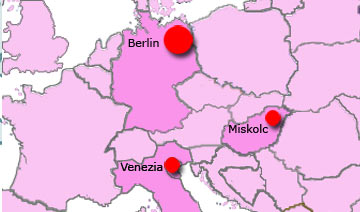
Following the 2019 Conference, organized during the Berlinale, in collaboration with AG Kino, MEDIA Salles continues to work on making known its research on the international market for added content.
The August appointment took place in Venice during the Cicae course addressing European exhibitors, whilst in September it will be held on the 19th in Miskolc, during the Int'l Film Festival, which includes a two-day meeting with exchange of experiences for professional players in the Hungarian cinema industry.
SAVE THE DATE!
19 September 2019, Miskolc (HU)
(Per leggere il testo in italiano cliccare qui)
|
|
|
|
NEW: THE EUROPEAN CINEMA CHARTS |
MEDIA Salles has recently begun publishing the European Cinema Charts, cartograms and inter-active maps which make it possible to compare indicators internationally, whilst facilitating a view of the relations between different phenomena, as well as making the data more immediately readable.
Added Content: Country Focuses and Key Figures
If you click on the green countries, you will find the "Country focus" drawn up by MEDIA Salles.
If you click on the yellow countries, you will find statistical data on the added content market collected by MEDIA Salles.
(Per leggere il testo in italiano cliccare qui)
|
|
|
ADDED CONTENT: Experts' Corner |
|
|
We are inaugurating a new column giving voice to the people who have already been working with added content for some time now, gaining first-hand experience in the field which we think is worth sharing internationally. To launch it, an interview with Tom de Bont, programmer of the Heerenstraat Theater in Wageningen, the Netherlands.
- Which type of audience do you target with added content?
 I think you cannot talk about one target group for added content. Like a regular movie all added content has its own target group. The key to success is to find this group and mobilize them. But again it is like a regular movie, we always keep in mind what the target group of our cinema is. If the target group of the event does not match with our cinema target group, or the quality is not high enough, we do not screen it. I think you cannot talk about one target group for added content. Like a regular movie all added content has its own target group. The key to success is to find this group and mobilize them. But again it is like a regular movie, we always keep in mind what the target group of our cinema is. If the target group of the event does not match with our cinema target group, or the quality is not high enough, we do not screen it.
As added content is one of our main focuses, and a perfect way to distinguish ourselves on the market, we put a lot of effort in hosting, organising and promoting these events. Besides bringing a higher box-office on off-peak moments, it is a perfect way to promote our cinema. We see it as marketing by events. We want to give our visitors the feeling that there is always something worthwhile and unique to experience (and specially not just to see) in our cinema. If they visit us for a special event they might also visit us to see a 'regular' movie. So far, this strategy has worked; in 2018 the entire Dutch market increased by 3.4%, we gained 11.5%. A great achievement for a small independent cinema surrounded by locations of national chains.
- We know that you offer a variety of added content: which is the most successful type (opera, ballet, theatre, popular music, art documentaries etc)?
The operas and ballets of The Royal Opera House are still incredibly popular. On average we have 90 visitors. Our biggest screening room has 108 seats.
 This year we have put a lot of effort into the Arts in Cinema screenings. Especially the 55+ target group seems to find these very interesting. Screenings are
already booked for the entire year. We know that this group of visitors like to plan their visit way ahead. No online-campaign, but a well-designed booklet with all the dates, prices and other important information. In our second season we tripled the number of visitors compared to the first. And all at off-peak moments: Tuesday afternoon at 4:00 pm, Sunday at 11:00 am or Wednesday at 6:30 pm. This year we have put a lot of effort into the Arts in Cinema screenings. Especially the 55+ target group seems to find these very interesting. Screenings are
already booked for the entire year. We know that this group of visitors like to plan their visit way ahead. No online-campaign, but a well-designed booklet with all the dates, prices and other important information. In our second season we tripled the number of visitors compared to the first. And all at off-peak moments: Tuesday afternoon at 4:00 pm, Sunday at 11:00 am or Wednesday at 6:30 pm.
- Is the ticket price for added content higher than the ticket price for films?
This depends entirely on the quality, uniqueness and event-value. A live concert by Metallica is totally different from a pre-recorded art documentary.
But our normal movie prices are around 10.00 euro. Events are somewhere between 12.50 and 24.50 euro.
- Which was the most successful screening in 2018/2019?
We like to work as much as possible in series. They are more interesting to market.
This year, in collaboration with the famous Wageningen University & Research, we started with the Wisdom & Wonder Movie Talks. Prominent professors/researchers were invited to be our guest programmer for one day. Instead of in a lecture hall they held their lecture in a cinema. In this introduction, in laymen's terms, they made the connection between the movie and their field of work.
Almost every screening was sold out. Why? It matched with one of our target groups (students), it was unique (only once) and it was of high quality (a prominent professor and great movies).
- Do you believe the Dutch market for added content/event cinema will develop in the near future?
I think the term added content is already outdated, as it cannot be 'un-added'. It is a significant part of cinema programming, and it can only increase. In my opinion, especially for smaller independent cinemas, it is indispensable to distinguish you from all the major chains. I see our big screens as windows to the world. You can see an opera, a ballet, a documentary or a movie... We turn off the lights and show you something you want to see from anywhere in the world, in your own local cinema.
- Can you imagine initiatives that could give more visibility to added content/event cinema in the Netherlands (professional conferences for cinema exhibitors/distributors, presentations of show-reels/trailers, informal gatherings etc.)?
Knowledge is power, so it is always good to stay informed of developments. But I think that nationwide marketing for these events can be improved. Most of the exhibitors know the value of added content, but after over 10 years of screening live-operas and concerts, people sometimes still ask: "Is Jonas Kaufmann really coming to your theatre?"
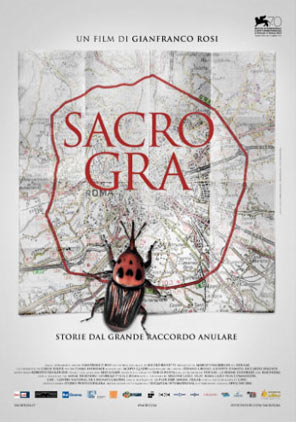 |
Films and Science events at the Heerenstraat Theater
in collaboration with Wageningen University & Research |
Programme
|
| 26/09/2018 |
Louise O. Fresco - President of the University's Academic Senate
Film: Chungking Express |
| 16/10/2018 |
Arthur Mol - Dean and Vice-President of the University's Academic Senate
Film: Beijing Taxi |
| 20/11/2018 |
Dick de Ridder & Willem Jan Knibbe - Bioinformatics
Film: AlphaGo |
| 15/1/2019 |
Marcel Dicke - Entomology
Film: Antz |
| 20/2/2019 |
Saskia van Ruth - Food authenticity and integrity
Film: Sour Grapes |
| 19/3/2019 |
Frits Mohren - Ecology and forest management
Film: Fitzcarraldo
|
| 16/4/2019 |
Ronald Osinga - Ecology of marine fauna
Film: Chasing Coral |
| 21/5/2019 |
Gerlinde De Deyn - Soil Biology
with the participation of Wim van Egmond, expert on microphotography
Film: Microcosmos |
| 18/6/2019 |
Maria Koelen - Health and Society
Film: Sacro GRA |
|
|
|
|
ALL DIFFERENT ALL DIGITAL |
| This column hosts portraits of cinemas in Europe and the rest of the world which are quite different from one another but have in common the fact that they have all adopted digital projection.
Country |
|
|
No. of screens |
No. of digital screens |
Technology |
Japan |
Toho Roppongi Hills |
Tokyo |
9 |
9 |
3D, MX4D, Atmos, THX |
Toho Roppongi Hills, Tokyo
by Gloria Brunella
They had already caught my eye on the underground: two girls of about twenty, dark obviously and with porcelain skin, in sneakers like millions of their peers all over the world. But they were wearing kimonos, with flowers in their hair and that rather melancholy expression you often see in Japanese prints. As I got off at Roppongi Hills - the urban, glass and steel mega-complex that has marked the Tokyo neighbourhood of Minato since 2003 - I wondered where they were going. To a party? To a religious ceremony? So I was quite surprised to see them again queuing for a ticket (at the automatic vending machines of course and with the highly Japanese JCB card) at the Toho Roppongi Hills, perhaps the most "western" of the capital's cinemas. As well as the most popular national productions, this city multiplex offers films made in the USA contemporarily with Los Angeles and New York City, both in English and in Japanese: this is why it is one of the locations preferred by the numerous expats in Tokyo. Foreign and local spectators alike appreciate the interesting architecture with walkways to the top floor, as well as the position giving an unusual view over the city. Other features that make this cinema one of the top choices, according to many keen customers, are its sophisticated atmosphere and the wide choice of restaurants and art galleries, making it possible to combine a film with a varied evening out - or even a whole day. One of the most popular "combinations" is a film and a visit to the museum on the 53rd floor of the Mori Tower, the iconic building made unique by Louis Bourgeois' enormous spider at the foot of it. As well as these advantages, the real reason why Toho Roppongi Hills is rated top by Tokyo's audiences is its technological excellence. 3D projection, THX certification, Atmos sound, as well as special effects, thanks to its 4D system that is a special favourite with children and young people. The attention to quality extends to the comfort of the seating, also available in a luxury version, which is roomier and accessorized. If you wanted to see a film at the moment, what would you find on the program? Obviously the inevitable Lion King, with a choice of 2D or even 3D + MX4D, in the original version or in Japanese, but also the twenty-third episode of Detective Conan (always a box-office record in Japan), the animated series whose main character is an adolescent detective trapped in the body of a child. As might be imagined, this is not Tokyo's most economic cinema and if the average ticket price in Japan is around 11 euros, it costs 1,900 yen (a little under 16 euros) to see a film at the Toho Roppongi Hills, although there are reductions for children, students, the disabled and the elderly, as well as original special offers (for example 2,400 yen for a couple in which at least one of the two is over 50 years old). If, instead, luxury seating is chosen, the price soars to 3,000 yen, or over 24 euros.
But who could ever imagine that a cinema whose customers define it with terms ranging from "upscale" to "sophisticated", to "state of the art" would not be "pricey", too?
(Per leggere il testo in italiano cliccare qui)
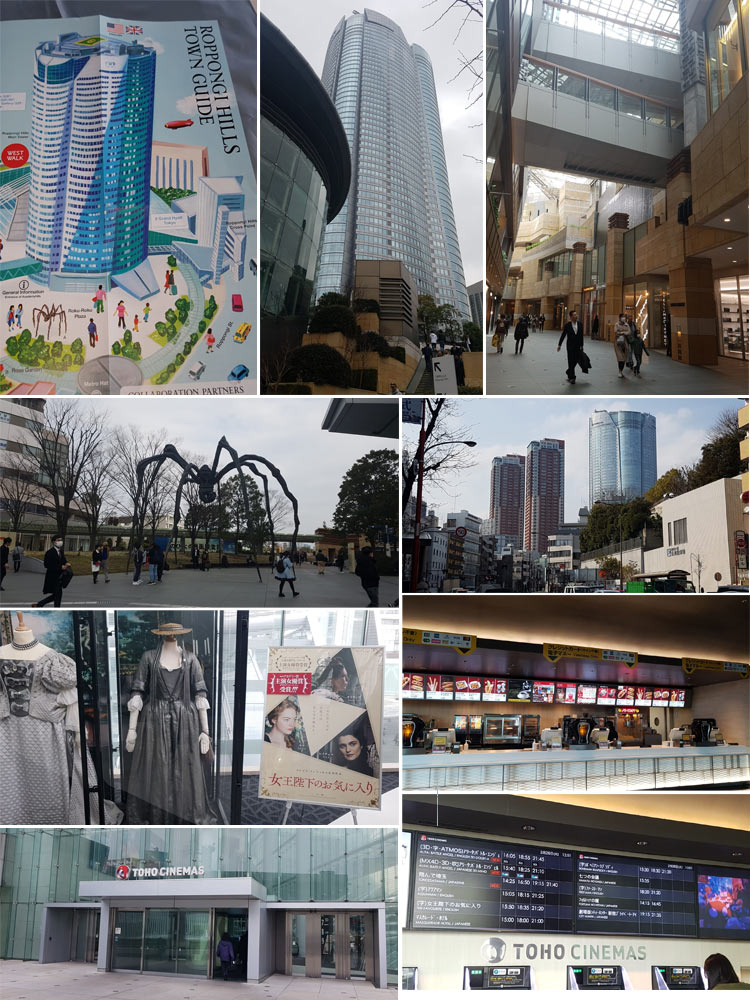
|
|
|
|
|
|
WOMEN IN DIGITAL CINEMA |
|
Silvia Cibien
EUROVOD
General Delegate
 Although the world of the cinema has been placed in the limelight despite itself, due to certain strongly conservative and male-chauvinist dynamics in it, we must add that female entrepreneurship is now taking giant steps forward in the world of audiovisuals compared to a few decades ago. Many women are prominent in the cinema sector and in my 15 years' experience in the sector I have never felt excluded as a woman, apart from certain managers (men or women) who failed to move with the times, not only in their relationships with their fellow workers but also in managing the structures they represented, using an outdated style of management which therefore carried with it traces of social inequality.
On entering the world of technology and digital, however, one becomes aware of the extent to which the sector is still male-dominated. Although the world of the cinema has been placed in the limelight despite itself, due to certain strongly conservative and male-chauvinist dynamics in it, we must add that female entrepreneurship is now taking giant steps forward in the world of audiovisuals compared to a few decades ago. Many women are prominent in the cinema sector and in my 15 years' experience in the sector I have never felt excluded as a woman, apart from certain managers (men or women) who failed to move with the times, not only in their relationships with their fellow workers but also in managing the structures they represented, using an outdated style of management which therefore carried with it traces of social inequality.
On entering the world of technology and digital, however, one becomes aware of the extent to which the sector is still male-dominated.
According to a study by the European Commission, "Women in the Digital Age", the number of women taking up education and pursuing careers in information and communication technologies (ICTs) has been decreasing, while vacancies in ICTs have been increasing. The study also found that if more women were to enter the digital jobs market, it could boost the EU's GDP by €16 billion each year.*
While taking part in the conference #Digital4Her held in Brussels on 19 June 2018, I realized that the problem of the lack of women in digital and technology sectors does not derive so much from the world of work but comes earlier - from education. As in many other sectors, girls and adolescents who would like to pursue technical studies are often hindered by prejudice from families or even from the schools themselves and the society of which they are the mirror. In this case women students with a family background where parents work in the sector have an advantage.
Since 2017 I have been working on international development in the world of cinema and technology and on public policies for two Video on Demand platforms (lacinetek.com, universcine.com) as well as coordinating EUROVOD, the only association to combine and represent European VoD services with a strong editorial identity, a considerable offer of art-house cinema and an average of 77% of European films in its catalogue. Apart from the Board of Directors, in EUROVOD we are an all-women team, responsible for the everyday development and organization of the association, such as the European VoD Meetings, VoD Market Day and the new project regarding a professional online platform for the sector of digital distribution. The choice was not gender-based but a pure combination of human and professional competences. Whilst on the VoD platforms, there continues to be a majority of male workers, particularly where there is an in-house technology department, I also see more and more women entering the digital sector thanks to a new generation of professional figures and managers who devote closer attention not only to matters of justice and social equality, but who are also simply motivated to choose the best professional profiles, free from any prejudice.
* Press Release CE Tuesday, 19 June : DIGITAL4HER CONFERENCE
(Per leggere il testo in italiano cliccare qui) |
|
MEDIA Salles
Piazza Luigi di Savoia, 24 - 20124 Milano - Italy
Tel.: +39.02.6739781 - Fax: +39.02.67397860
E-mail: infocinema@mediasalles.it |
|
|







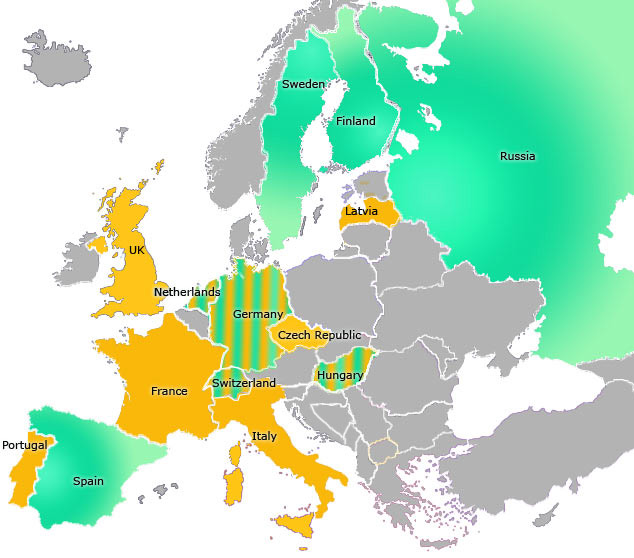

 I think you cannot talk about one target group for added content. Like a regular movie all added content has its own target group. The key to success is to find this group and mobilize them. But again it is like a regular movie, we always keep in mind what the target group of our cinema is. If the target group of the event does not match with our cinema target group, or the quality is not high enough, we do not screen it.
I think you cannot talk about one target group for added content. Like a regular movie all added content has its own target group. The key to success is to find this group and mobilize them. But again it is like a regular movie, we always keep in mind what the target group of our cinema is. If the target group of the event does not match with our cinema target group, or the quality is not high enough, we do not screen it.  This year we have put a lot of effort into the Arts in Cinema screenings. Especially the 55+ target group seems to find these very interesting. Screenings are
already booked for the entire year. We know that this group of visitors like to plan their visit way ahead. No online-campaign, but a well-designed booklet with all the dates, prices and other important information. In our second season we tripled the number of visitors compared to the first. And all at off-peak moments: Tuesday afternoon at 4:00 pm, Sunday at 11:00 am or Wednesday at 6:30 pm.
This year we have put a lot of effort into the Arts in Cinema screenings. Especially the 55+ target group seems to find these very interesting. Screenings are
already booked for the entire year. We know that this group of visitors like to plan their visit way ahead. No online-campaign, but a well-designed booklet with all the dates, prices and other important information. In our second season we tripled the number of visitors compared to the first. And all at off-peak moments: Tuesday afternoon at 4:00 pm, Sunday at 11:00 am or Wednesday at 6:30 pm. 

